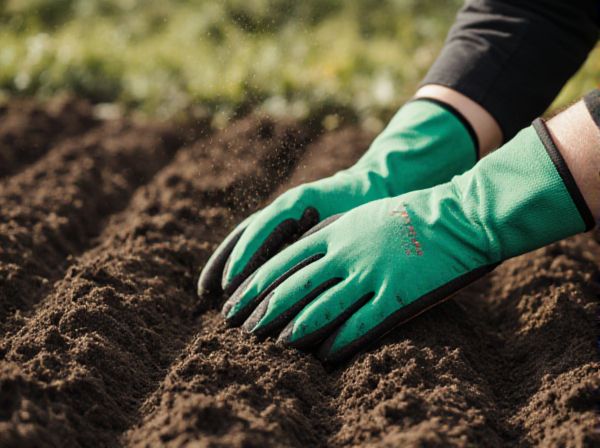
No-till farming vs traditional tilling Illustration
No-till farming preserves soil structure by minimizing disturbance, enhancing organic matter retention, and promoting beneficial microbial activity. Traditional tilling disrupts soil ecosystems, leading to increased erosion, loss of nutrients, and reduced carbon sequestration. Adopting no-till practices supports sustainable organic agriculture through improved soil health and biodiversity.
Table of Comparison
| Aspect | No-Till Farming | Traditional Tilling |
|---|---|---|
| Soil Health | Preserves soil structure, enhances microbial activity, reduces erosion | Disrupts soil, reduces organic matter, increases erosion risk |
| Carbon Sequestration | Increases soil carbon storage, helps mitigate climate change | Releases stored carbon, contributes to greenhouse gas emissions |
| Weed Management | Relies on cover crops and herbicides | Uses mechanical disturbance to control weeds |
| Labor & Fuel | Reduces labor and fuel costs by minimizing field passes | Higher labor and fuel costs due to repeated plowing |
| Crop Yield | Comparable or improved yields over time with soil health improvement | Initially high yields but potential decline due to soil degradation |
| Water Retention | Improves water infiltration and retention | Can cause runoff and reduced water retention |
Introduction to No-Till and Traditional Tilling
No-till farming minimizes soil disturbance by leaving crop residues on the field, which enhances soil structure, moisture retention, and organic matter. Traditional tilling involves mechanically turning the soil, which can lead to increased erosion, loss of nutrients, and disruption of soil microorganisms. No-till practices promote sustainable agriculture by reducing carbon emissions and improving long-term soil health compared to conventional tillage.
Fundamental Principles of No-Till Gardening
No-till gardening preserves soil structure by minimizing disturbance, promoting natural microbial activity and enhancing organic matter retention. This method relies on maintaining a protective mulch layer and using cover crops to reduce erosion and improve soil fertility. By avoiding traditional tilling, no-till practices support biodiversity and increase water infiltration, resulting in healthier, more resilient soil ecosystems.
How Traditional Tilling Methods Work
Traditional tilling involves mechanically turning the soil using plows, harrows, or rototillers to break up compacted ground and prepare seedbeds. This process disrupts soil structure, increases erosion risk, and accelerates organic matter decomposition, impacting long-term soil fertility. Frequent tillage also disturbs beneficial soil organisms, reducing microbial activity essential for nutrient cycling in organic farming systems.
Soil Health: No-Till vs. Traditional Tilling
No-till farming significantly improves soil health by preserving soil structure, enhancing microbial activity, and reducing erosion compared to traditional tilling, which disrupts soil layers and depletes organic matter. The intact soil profile in no-till systems boosts water retention and nutrient cycling, promoting sustainable crop growth. Traditional tilling increases carbon loss and soil compaction, leading to reduced fertility and long-term degradation.
Impact on Soil Microbes and Earthworms
No-till farming enhances soil microbial diversity and activity by preserving soil structure and organic matter, creating a stable habitat for beneficial microbes and earthworms. Traditional tilling disrupts soil ecosystems, leading to reduced microbial biomass and earthworm populations due to increased soil erosion and disturbance. Maintaining no-till practices promotes nutrient cycling and soil health, essential for sustainable organic farming systems.
Water Retention and Erosion Control
No-till farming significantly improves water retention by preserving soil structure and organic matter, which enhances moisture infiltration and reduces surface runoff. Traditional tilling disrupts soil aggregates, leading to increased erosion and diminished water-holding capacity. Studies show no-till fields retain up to 30% more water and experience 50% less soil erosion compared to conventionally tilled lands.
Weed Management Strategies
No-till farming enhances weed management by maintaining soil structure and promoting natural weed suppression through crop residue cover, reducing the need for chemical herbicides. Traditional tilling disrupts weed seed banks by physically uprooting weeds but often increases soil erosion and organic matter loss, which can promote weed germination over time. Integrating cover crops with no-till systems offers an effective strategy to compete with weeds and improve soil health simultaneously.
Crop Yields and Long-term Productivity
No-till farming enhances soil structure and moisture retention, leading to consistent crop yields by minimizing soil disturbance and preserving organic matter. Traditional tilling often disrupts soil ecosystems, which can cause short-term yield boosts but degrade long-term productivity through erosion and nutrient loss. Over time, no-till methods improve soil health, promoting sustainable crop production and resilience against climate variability.
Environmental Benefits and Sustainability
No-till farming significantly reduces soil erosion and enhances carbon sequestration compared to traditional tilling, promoting long-term soil health and biodiversity. This method preserves soil structure, increases water retention, and decreases fuel consumption by minimizing machinery use, leading to lower greenhouse gas emissions. Sustainable agriculture benefits from no-till practices by fostering resilient ecosystems and reducing the environmental footprint associated with crop production.
Choosing the Best Method for Organic Gardens
No-till farming preserves soil structure, enhances microbial life, and reduces erosion, making it ideal for organic gardens aiming for sustainable health. Traditional tilling, while effective at weed control and preparing seedbeds, can disrupt soil ecosystems and increase erosion risks. Selecting the best method depends on balancing soil conservation with garden goals, where no-till offers long-term benefits and traditional tilling addresses immediate planting needs.
No-till farming vs traditional tilling Infographic

 gardendif.com
gardendif.com